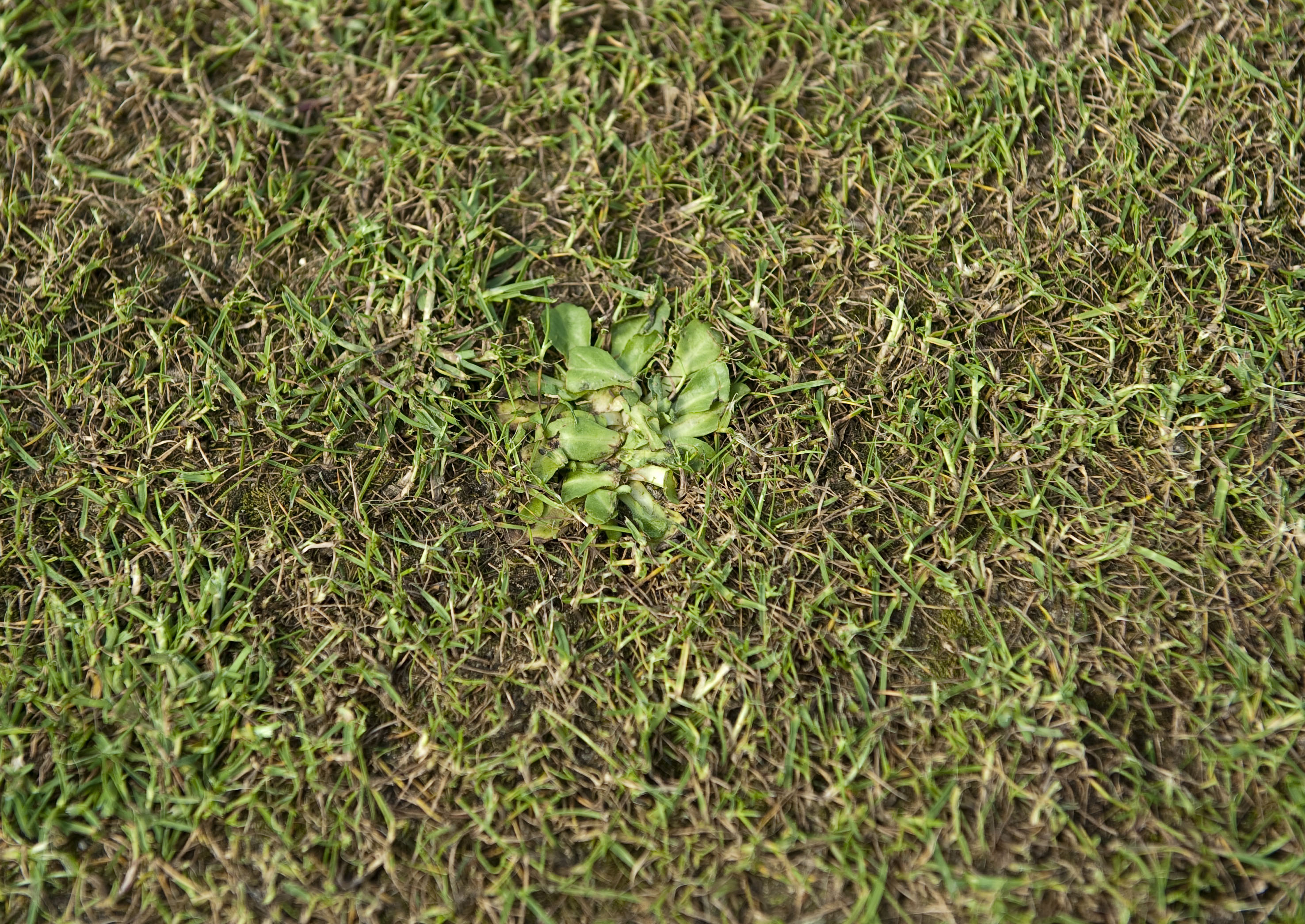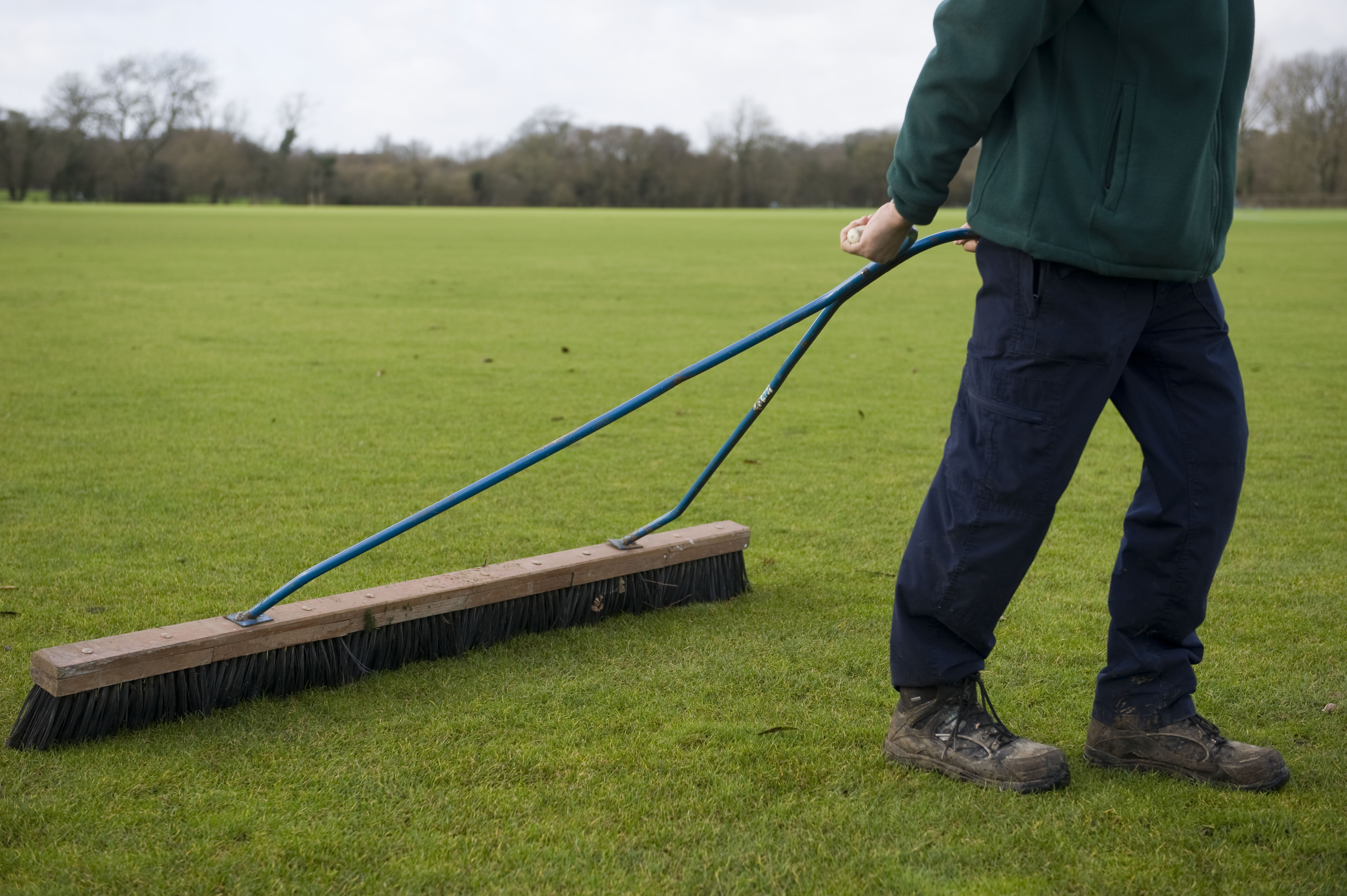The management of weeds, pests and diseases is a specialist area of turf care but there are some basics you can follow.
Pesticides can be harmful to operators, users, and the environment. The use of pesticides is regulated in law and requires specialist storage, application and disposal – you should only use pesticides if you can comply with this law. For occasional use you should use a specialist contractor who will be responsible for complying with pesticide law. This will help to reduce the risk of harm to you, the users of your facility and the environment. Always follow the label instructions and do not apply pesticides illegally.
If you use pesticides on your ground (even where they are being applied by a contractor), you may need to register on the site as a Plant Protection Product user with DEFRA. Click here for more information
Casting earthworms
The most common pest on a cricket square is the earthworm. The casts left by worms become smeared when cut with roller mowers which can cause bare areas on the pitches, creating two-paced pitches.
Worm activity is highest in Spring and Autumn, in Summer it is often too dry, but they will appear following rainfall. Note that chemical control of worms is restricted. Making sure you remove clippings and thatch to remove food for the worms and also remove worm casts before mowing help with this problem.
It is really important to remove worm casts before cutting - particularly pre-season, otherwise they will be smeared under the mowers roller (particularly with cylinder mowers that have a front roller). This 'smear' can become a bare patch that will either persist or create a location for a weed or weed grass such as annual meadow grass (Poa annua) plant.
Removing worm casts can be a challenge with the clayey soils used for crickeet square construction but regular brushing or drag matting - particularly in dry conditions can help to disperse casts. Otherwise manual removal with an old dinner fork maybe the only way (more suited to low number of casts - for high numbers of casts this could be a 'working party' activity!)
Other pests
Other pests you might see in your profile are ‘Leatherjackets’ (the pupae of the crane fly) or ‘Chafer Grubs’ the larvae stage of chafer beetles – these are more common in outfields than squares however because they do not like heavily compacted clay soils with low thatch contents. Getting rid of a grub problem can be very difficult, so cultural controls such as removing thatch are the best way to prevent an infestation.
Other pests affecting squares tend to be larger whether that is birds pecking to remove worms, grubs and ants from the profile or rabbits, foxes and badgers digging – particularly in newly constructed squares. Control of these pests often involved bird scarers and fences as deterrents. If problems persist speak to your local pest controller but note that some species such as the badger are protected in law.
Weeds
The majority of broad-leaved weeds can be managed by hand. Using a knife, flat bladed screwdriver or peeler-knife, walk the square removing the weeds and plugging with loam and seeding to encourage grass to grow in the space left by the weed.
Where weeds are more widespread, persistent, or otherwise difficult to control by hand weeding, then use of a selective herbicide may be beneficial but before resorting to chemical control you can identify the weed using freely available turf management apps and see whether there is a cultural control such as adjusting nutrients, verticutting, aeration or mowing heights.
If you are applying a selective herbicide – make sure that the herbicide controls the weeds on your square and only apply as a last resort. You must comply with all pesticide legislation and best practice guidance. If you do not have the correct storage, equipment, and training then you should use a suitable contractor.
Disease
Because the grass plant is often under stress or under cover on a cricket square fungal diseases can be common. You should not need to apply fungicide as a preventative (technically called prophylactic application) because there are a number of cultural practices you can carry out to reduce disease risk:
- Fungal diseases like moist conditions so regular brushing of your grass to remove dew and get air to flow to the base of the plant can reduce disease risk.
- Keeping your mower sharp and setting it correctly to provide a clean cut of the grass is vital to reduce disease risk – ripped or torn leaves caused by a blunt or improperly set mower create weaknesses in the grass plant that fungal diseases can attack.
- Get your plant nutrition right when you use fertiliser. Red thread disease (Laetisaria fuciformis) is a common disease caused by low nutrient availability – you can control the early onset of red thread by applying a nitrogen containing fertiliser and then cutting to remove old leaves. Whereas Microdochium patch (Microdochium nivale, formerly called fusarium patch) likes lush, over fed grass in cooler temperatures which is why autumn fertilisers are lower in nitrogen.
- Try not to leave flat sheet covers down for long periods as this creates ideal conditions for disease – try to keep fresh air flowing over the grass.
If you do need to apply a fungicide always comply with the product label and use a suitably qualified contractor to provide advice and or apply the product unless you can comply with the relevant pesticide legislation.
Benefits
- Keeping on top of weeds, pests and diseases maintains a healthy sward that will lead to better performing, safer and more easily managed pitches.
- It also improves aesthetics, but this should not be the primary driver for application of pesticides.
Practical tips
- Good cultural practices can help prevent weeds, pests and diseases and help to protect the environment.
- Always follow the product label and comply with pesticide regulations. Full compliance with the legislation requires the correct storage, application equipment, personal protective equipment (PPE), wash down facilities, disposal, and training – this can be prohibitively expensive to maintain for occasional use – so use a suitably qualified contractor who can comply with the law.
- Check to see if you need to register with DEFRA as a Plant Protection Product user.
- If you are unsure, speak to other grounds managers or your County Pitch Advisor.



 Tweet
Tweet